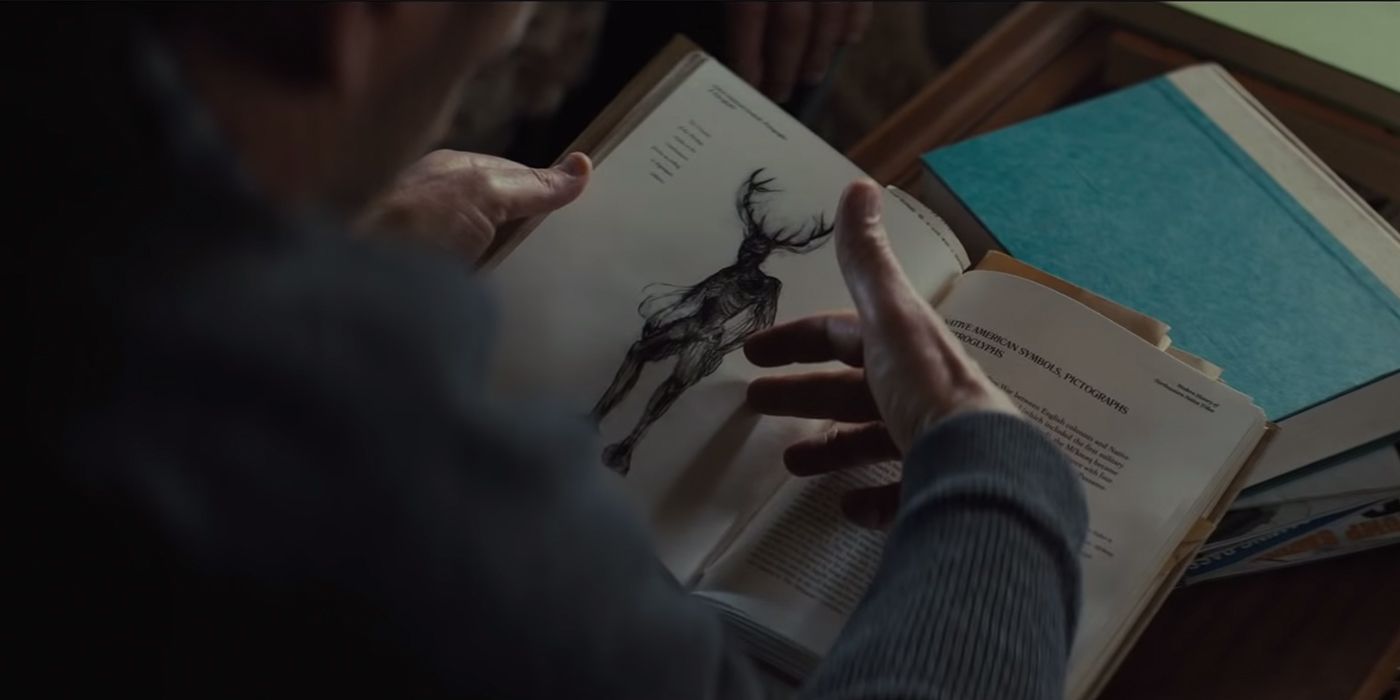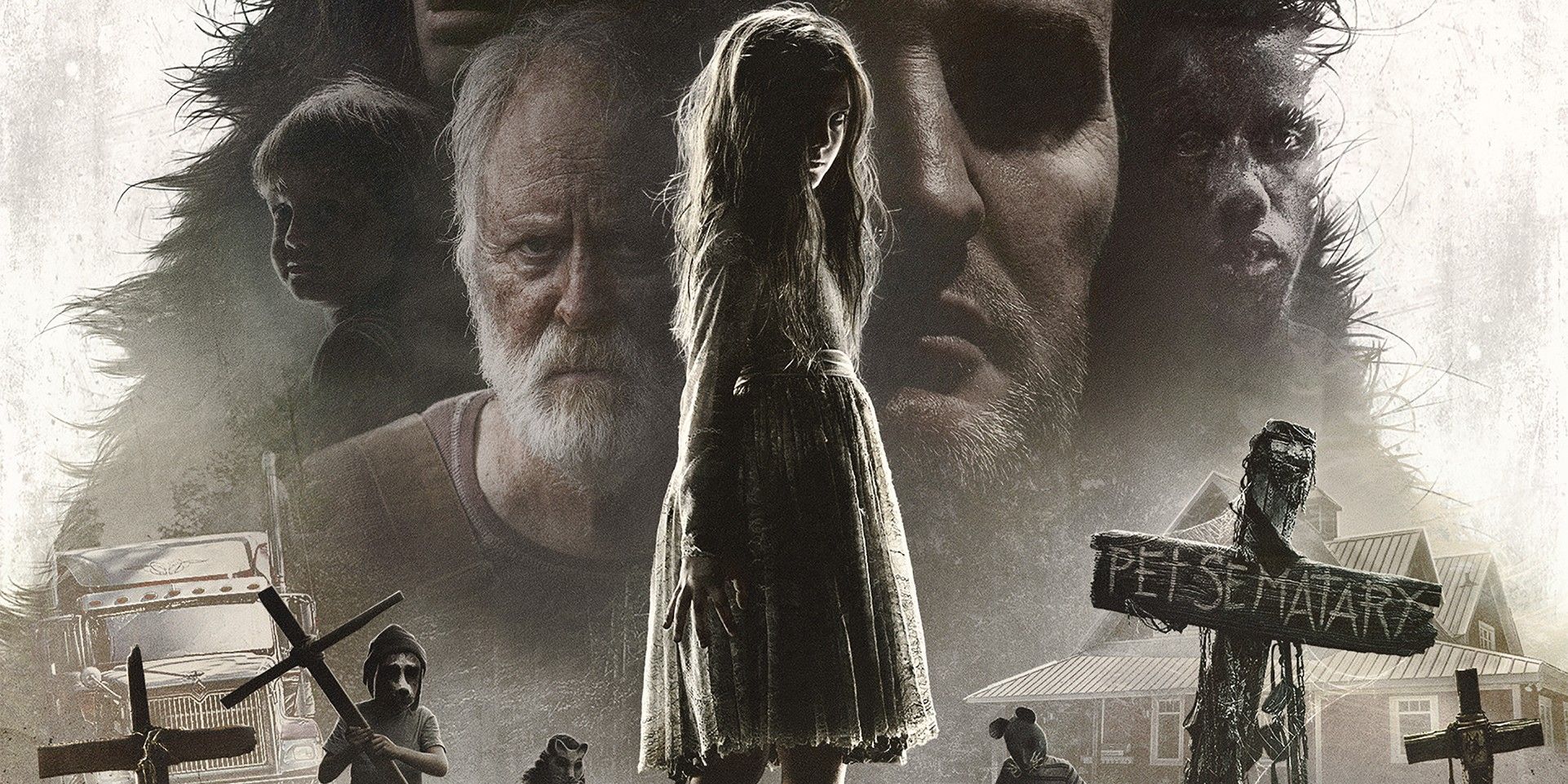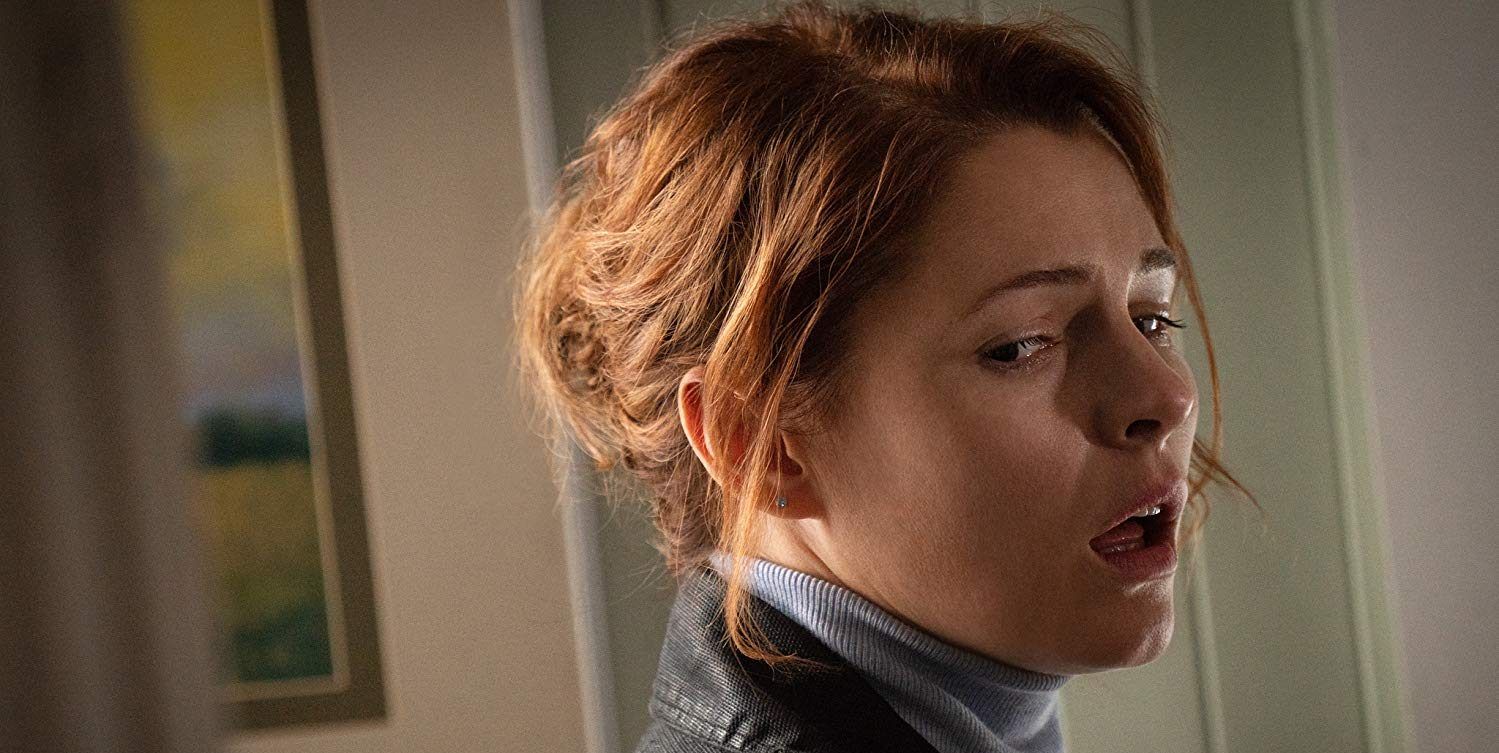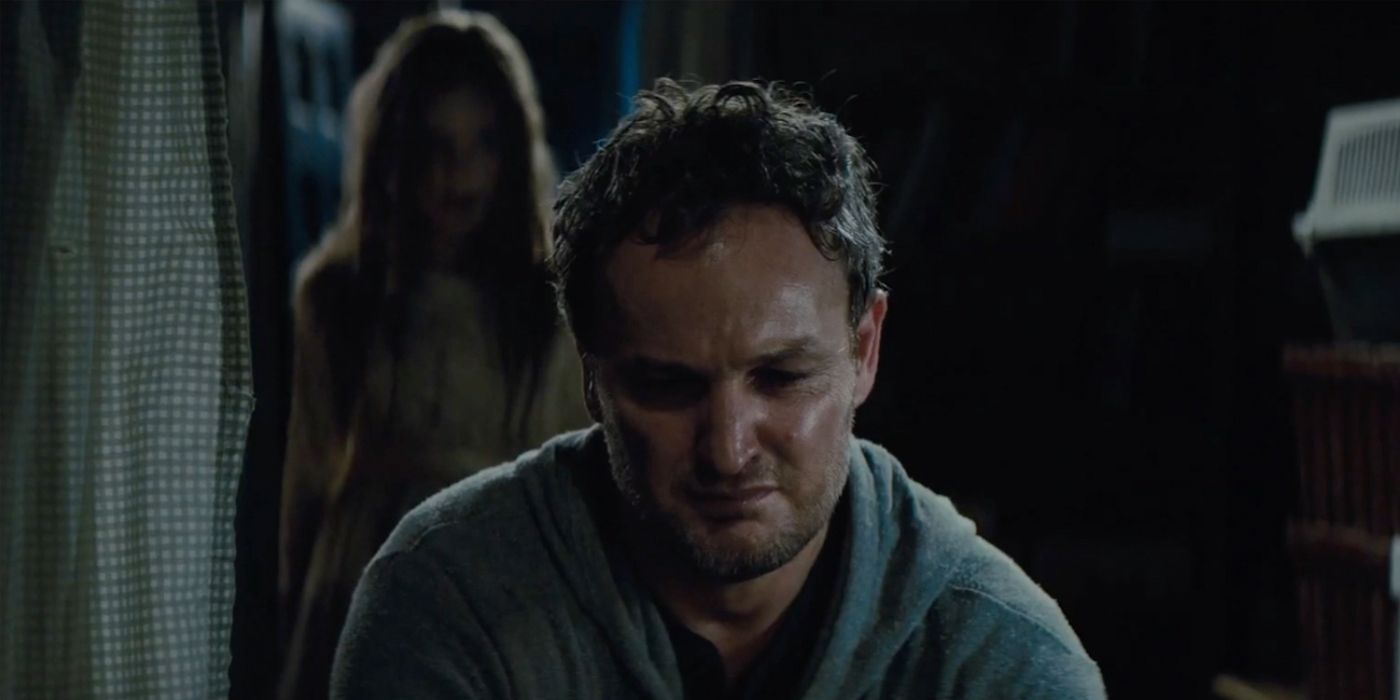WARNING: Major spoilers for Pet Sematary
-
Apart from altering Stephen King's original ending, the latest adaptation of Pet Sematary also increases the body count and resurrects some unexpected characters in the titular cursed graveyard. Even the major spoiler that was revealed in the trailers didn't ruin certain creative liberties taken in the film's final act.
Based on Stephen King's 1983 novel of the same name, Kevin Kölsch and Dennis Widmyer's Pet Sematary follows Louis and Rachel Creed (Jason Clarke and Amy Seimetz, respectively) as they move their family of four from the busy city life of Boston to the slow (and later discovered, supernatural) small town life of Ludlow, Maine. Following a sudden tragedy, their neighbor Jud (John Lithgow) let's Louis in on a little secret: the land they bought is cursed, and the root of the curse is in a cemetery deep in the woods that brings the dead back to life. Unfortunately, this knowledge ends up being a curse itself when Louis attempts to use the cemetery's powers to his advantage, only to pave the way for irreversible horror.
Related: What To Expect From A Pet Sematary 2
While it's hardly unprecedented for adaptations to take some creative liberties with the source material - especially when it comes to adapting one of King's behemoth novels into a single film - this version of Pet Sematary makes one major change to the story that ends up rewiring the entire third act. That said, whether or not it lives up to the original, or even improves upon it, the 2019 Pet Sematary ending introduces some new elements to King's story that are worth exploring.
- This Page: Wendigo Spirit Explained & How The Resurrections Are Different
- Page 2: What Happens In Pet Sematary's Ending & What Changed From The Original
The Wendigo Spirit Explained
One significant element in King's Pet Sematary novel that isn't present in Mary Lambert's original 1989 adaptation is the Wendigo. A demon derived from Algonquin folklore, this creature is essentially the patron saint of misery and death, typically linked to things like famine, cannibalism, and murder - which would explain King's decision to make it a staple figure in Pet Sematary. In the novel, the Wendigo's roots run deep in Ludlow, to way back when the land was inhabited by Native Americans. It discovered a patch of land known as the Micmac Burial Ground and cursed it, ultimately scaring away the residents once they discovered its dark, supernatural power. Only, when the original settlers left, the Wendigo stayed, and the rest is history.
In the 2019 Pet Sematary movie, the Wendigo is mentioned but almost in passing. Louis gets his first glimpse of it when Jud shows him a book detailing the town's seedy history, and they later hear it making some unnatural sounds in the woods. In the film, it's more of a presence than a physical being - though Louis does catch some shadowy glimpse of it when he's making his way to the burial ground - and its influence on the characters is what motivates their sudden string of tragedy.
Related: Just How Scary (& Violent) Is Pet Sematary 2019?
There are other supernatural forces at play in the Pet Sematary film, like the ghost of Victor Pascow (Obssa Ahmed) warning the Creeds to stay away from the Pet Sematary, but the Wendigo is pulling the strings. It's the force that draws Louis into the woods - that conjures up all of Rachel's darkest memories - that makes death such a magnet to anyone living on its land. In short, the Pet Sematary would never exist with the Wendigo.
How The Resurrected Are Different
For a movie that revolves around death, the body count isn't especially high in Pet Sematary - especially compared to other horror films whose crux is bringing the dead back to life. That said, it's still grim business all around, and this latest adaptation introduces an updated death toll that is arguably darker than its predecessor - in terms of its central characters at least. Considering that Pet Sematary's cursed burial ground dates back centuries, there have been plenty of reanimated corpses who can thank the Wendigo's soured soil for bringing them back to life. That said, the characters who die in this latest film and are later resurrected differ slightly from the source material - and the biggest difference was actually spoiled in Pet Sematary's trailers.
In both the novel and the latest adaptation, the Creed family's pet cat Church is the first to get buried, and ultimately resurrected, in the cemetery. This gets the ball rolling for the ensuing tragedy, and it's up until this point that the adaptation sticks closely to King's original story. It's the first human character who's buried in the Pet Sematary that serves as the biggest change: Ellie Creed (Jeté Laurence). In the book, Ellie's younger brother Gage (played in the film by twins Hugo and Lucas Lavoie) is killed, thus sending Louis into an emotional deep end that ultimately destroys his entire family. In this adaptation, Ellie is the unfortunate first victim, and the change wasn't just done to shake things up, but to add a more emotionally damaging element to the story. When Gage is resurrected, he's too young to comprehend what's happening; Ellie, on the other hand, was just starting to understand the true meaning and weight of death shortly before she was killed.
The final two resurrections belong to Rachel and Louis. In the original Pet Sematary, Louis' death is implied after Rachel's reanimated corpse returns from the Pet Sematary, but never shown. In this version of Pet Sematary, though the audience never sees Louis buried, his resurrected self returns home with his wife and daughter.
Page 2 of 2: What Happens In Pet Sematary's Ending & What Changed From The Original
What Happens At The End Of Pet Sematary
Pet Sematary's final act is a fight to the death. Better yet, it's a fight to bring the dead back to life. Once Ellie's reanimated corpse is well aware that neither Rachael nor Jud will accept the fact that she's been resurrected, her killing spree begins - starting with Jud. Despite the fact that Jud is well aware of the burial ground's supernatural powers, and despite the fact that he's equipped with a gun, he ultimately becomes Ellie's first victim. Unfortunately, once Louis discover what his daughter's done, he's still late to prevent her from doing the same to his wife. Rachel and Ellie engage in a cat-and-mouse chase, in which Rachel isn't only trying to escape, but get Gage to safety. Though she does succeed with the latter, she's bested in the end when Ellie stabs Rachel in the back, which doesn't just begin the process for a slow and painful death, but forces Rachel to live out her worst fear moments before dying.
Throughout the film, Rachel is haunted by the memory of her sister Zelda's death, for which she blames herself. Zelda suffered from spinal meningitis, which left her bedridden and jealous of her sister; and after Rachel inadvertently caused Zelda's death, she spent the rest of her life not only struggling to talk about death, but fearing that she might become an invalid like her sister. So, in the end, with a kitchen knife plunged deep in her back, Rachel's nightmare comes true; suffering and unable to move as she slowly dies.
Related: Does Pet Sematary Have An After-Credits Scene?
Thankfully, she manages to get Gage to safety before her death, handing him off to Louis, who locks the toddler in their car. Gage is prompted to keep the doors locked, no matter what, after which time Louis proceeds to the Pet Sematary to prevent Ellie from burying his wife. However, given the doomed nature of this entire story, Louis isn't only too late, but is ultimately killed by Rachel, who then helps Ellie bury Louis in the ground, resurrecting him. In the final scene, Gage is still alone in the car, when he sees his undead family exiting the woods and moving towards him. Louis puts his face to the window, stares at his son, and as the film cuts to black, the sound of the car unlocking beeps off-screen, leaving the toddler's fate unspecified, but obvious.
How Pet Sematary's Ending Is Different To The Original
Aside from Jud and Rachel's deaths, Pet Sematary's ending is a far cry from the original - and all the differences are a product of the film's first major change: Ellie's death. In the original Pet Sematary ending, there is a sense of dour victory, with Louis believing that, despite all of the tragedies he's faced, he mostly undid the damage he'd done. Of course, following the story's nihilistic theme, that doesn't turn out to be the case.
In the original Pet Sematary, Louis does manage to successfully kill both Gage and Church by injecting them with morphine (this ties back to his medical background, as well as the very reason the Creeds moved to Ludlow in the first place), and Ellie has, at this point, out of harm's way, staying with her grandparents. So, in a sense, he succeeded in eliminating the story's perceived villains and protecting at least one member of his family. But the villain in Pet Sematary was never the reanimated corpses. The villain is the burial ground; and by extension, the Wendigo. Still, he might have had a chance at surviving had he not buried his wife, who ultimately - and unsurprisingly - returns from the dead. In the novel, it's up to the reader to determine whether or not she kills Louis, though every event leading up to that moment suggests she will; while in the original Pet Sematary adaptation, Louis is presumably killed off-screen, given the fact that Rachel is holding a knife and Louis is heard screaming.
In this newest Pet Sematary adaptation, the entire Creed family succumbs to the cursed burial ground (assuming the worst for Gage in that final shot), whereas Ellie, at the very least, made it out alive in the original. And a key takeaway with this version of Pet Sematary is that it doesn't necessarily reinvent the story, but rearrange it. As a result, it allows a few twists and turns to differentiate it from the source material, while still staying true to King's original idea. In fact, as frustrating as it might have been for audiences, and even the film's directors, to have the Ellie/Gage twist spoiled in the trailers, it allowed the film to pull the rug out from underneath the audience at the very last moment.
There's a shred of hope at the end that Gage has a shot at making it out alive, but in a way, his fate is even worse than the original. Throughout Pet Sematary, there are several incidents that tease harm coming his way, only to have him saved at the last moment. So, by the time it's revealed that he doesn't have a shot at surviving after all, and that he didn't just trade places with Ellie earlier on, but with his Louis' character at the end of the original, Pet Sematary officially establishes itself as the official feel-bad movie of the year, waiting till the last possible second - when there's still technically hope - to save the final death for Pet Sematary's most innocent and helpless character.
More: Every Stephen King Movie Ranked, From Worst To Best






